This was published 3 years ago
The world's most popular airline planes: Boeing and Airbus's rival models
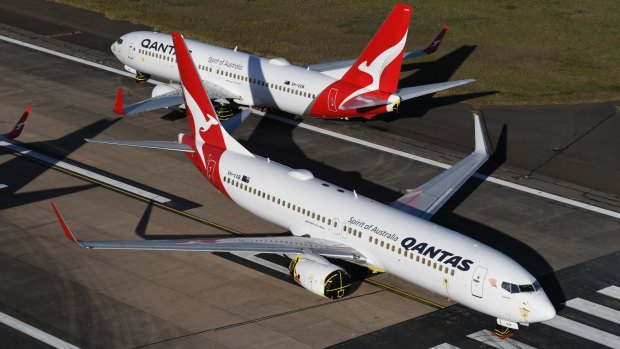
Qantas 737-800s at Sydney Airport.Credit: Getty Images
The aircraft that dazzled us in the early days of jet travel have mostly disappeared from the skies. More than 1800 Boeing 727s were built before production ended in 1984, but only a small handful still operate. Close to a thousand McDonnell Douglas DC-9 were produced between 1965 and 1982. Even the much-loved 747 jumbo jet, which carried its first paying passengers more than half a century ago, is becoming a rarity – although one other aircraft from that same era has stood the test of time. Here's the five most popular commercial aircraft currently flying.
Boeing 737
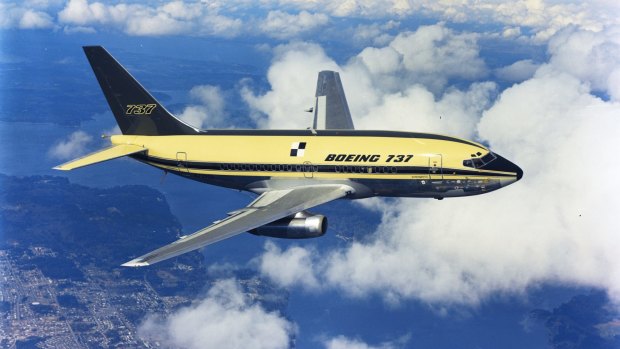
Credit: Boeing
Since the first Boeing 737 was delivered to Lufthansa in 1968, this has been the backbone of short-haul airline travel. Since then, more than 10,500 have been delivered, operating in more than 200 countries. At the end of 2019, the Boeing factory at Renton, Washington was turning out 737s at the rate of 1½ aircraft per day, seven days a week.
They're also durable. The oldest 737 still in commercial service is operated by Canadian charter airline Nolinor Aviation, first delivered to The Netherlands' Transavia Airlines in May 1974.
Over the decades the original 737-100 has been replaced by the 737-200, the 737-300 and through the 100s until the 737-900 which made its commercial debut in 2001. Subsequent variants have borne the name "737 MAX". One of those, the 737 MAX 8, was grounded worldwide from March 2019 to November 2020 following failures in its Maneuvering Characteristics Augmentation System which caused two fatal crashes.
Southwest Airlines has the largest fleet of Boeing 737 aircraft, a total of 734. Apart from a brief period with Boeing 727s, Southwest has flown no other aircraft since it began operating in 1971. In second and third places, United and American Airlines have only about half that number. All the other top 10 carriers with the greatest number of 737s are either US or Chinese airlines, except for Ryanair, in fourth place. Qantas has 75 737s, Virgin Australia 59.
A surprise operator is the US Navy, which uses its 113 Boeing 737s for surveillance and antisubmarine warfare.
Airbus A320
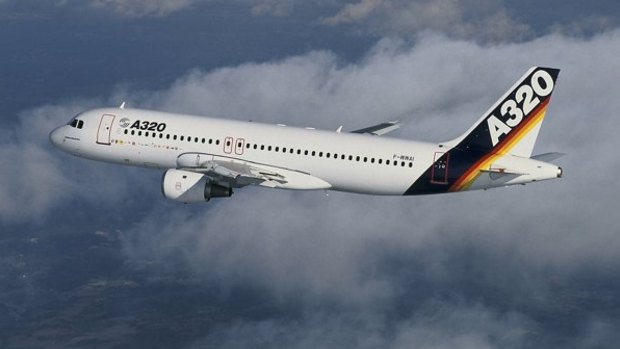
Credit: Airbus
Airbus' answer to Boeing's workhorse 737, the A320 became the world's best-selling commercial jet aircraft late in 2019, taking the crown from Boeing's 737 with 15,522 sales. That's despite the 737 emerging two decades earlier than the A320's launch in 1988. However, that sales figure includes several thousand on order and yet to be delivered. In terms of aircraft in the skies, the 737 is still number one.
The short-to-medium-haul A320 family also includes the A318, A319 and A321, all shorter or stretched variants of the same aircraft, with 107-230 passengers. The A320 was the first aircraft to use a fly-by-wire flight control system, with an electronic interface rather than the conventional manual flight controls.
The biggest operator is American Airlines, with 410 of the aircraft type. Before it merged with US Airways in 2013, AA flew primarily Boeings, while US Airways had more than 250 Airbus A320s in its fleet. AA now flies more A320s than it does Boeing 737s. In second place, China Eastern Airlines has more than 300 A320s, followed by China Southern. Even American Airline's A320 fleet could soon be eclipsed by India's low-cost IndiGo, with a total of 730 aircraft on order.
Virgin Australia has just two A320s, QantasLink has eight, operated by Network Aviation and all flying within Western Australia.
Boeing 777
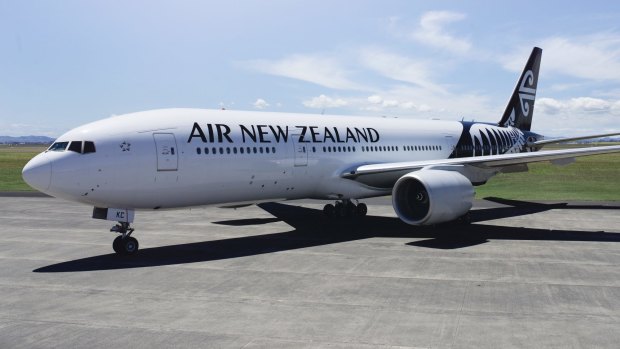
Air New Zealand has 16 Boeing 777s.
The largest twin-engine jet, Boeing's 777 is also the world's most popular wide-body aircraft, surpassing even the numbers of the venerable Boeing 747, with a total of 1657 delivered to February 2021. First to roll out of the hanger was the 777-200, which entered service in 1995 yet it has stood the test of time, adapting to state-of-the art upgrades such as Emirates first class suites and Air France's impressive La Premiere first class on its 777-300ER, operating non-stop Paris to Beijing in pre-pandemic days.
Seating between 301 and 368 passengers in a 10-across economy class configuration, and with a range of 9700 to 15840 kilometres, it's been a natural choice for airlines looking for an aircraft to replace ageing 747s.
The latest version is the 777X, expected to make its commercial debut late in 2023. One of the unique features of the 777X is a folding wingtip. The aircraft's wingspan of 71.75 metres offers improved fuel performance but the extreme length creates a potential parking clash with neighbouring aircraft. To avoid that problem, the wingtips can be flipped up, reducing the wingspan almost seven metres to that of the 777-300LR.
Emirates is the largest operator of the 777 with 147 currently in its fleet. United has 96 and Qatar Airways has 81. Neither Qantas nor Virgin Australia currently operates the aircraft (Virgin used 777s on it US routes prior to COVID-19) but Air New Zealand has 16, previously used on long-haul services and currently parked awaiting the resumption of international travel.
Airbus A330
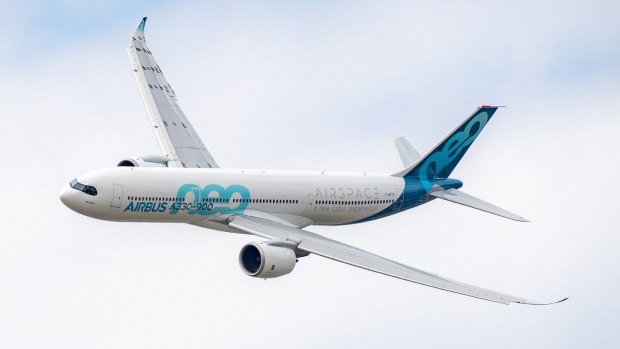
Credit: Airbus
This twin-engine widebody goes toe-to-toe with Airbus's Boeing's 777, and in terms of range, passenger load and sales - 1506 A330s had been delivered worldwide by the end of November 2020 – the two are practically in lockstep.
Curiously for an aircraft with a range of over 11,000 kilometres, French domestic carrier Air Inter was the launch customer in January 1994, operating the aircraft between Paris and Marseilles. Since that time Airbus has produced four variants, the A330-200, followed by the -300, -800 and -900.
The A330-900 carries 257 passengers and has a range of 15,090 kms. Other variants can carry as many as 440 passengers. Many flyers prefer its typical economy class configuration of 2-4-2 or 3-3-3, against the 3-4-3 setup often found aboard Boeing's 777.
Although the earlier A330s sold well, the A330-800 and -900, the so-called neo (new engine option) versions have failed to live up expectations, facing headwinds against Boeing's Dreamliner and even Airbus' own A350.
The main market for the A330 is the Asia Pacific. US or Middle Eastern carriers lean towards Boeing's 777. The exception is Delta Air Lines, which has 50 A330s, and not a single Boeing 777. Turkish Airlines is the largest operator with 63 A330s, followed by China Eastern with 54 and China Southern with 37. Qantas is a significant customer with 28 A330s in its fleet while Virgin Australia has three.
Boeing 787
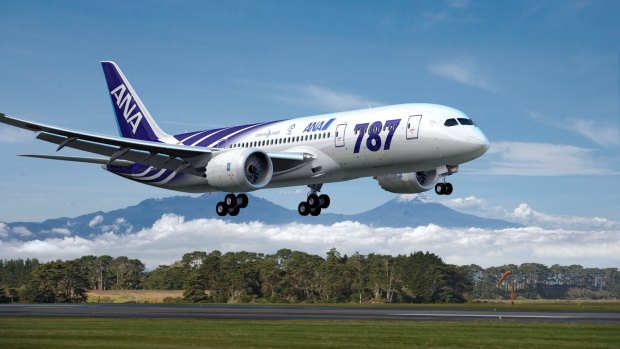
ANA was the launch customer for the Boeing 787 Dreamliner.Credit: BOEING
Since its much-awaited (and delayed) commercial debut in October 2011, the Boeing 787 has been a game changer for the aircraft industry.
Constructed extensively from carbon fibre reinforced polymer, the 787's cabin tolerates higher pressure than an all-metal fuselage, making for a more comfortable passenger experience. Windows are 65 per cent larger than on a standard aircraft window, and the aircraft uses electrical power to control rudder, flaps and elevators rather than the hydraulics used on traditional aircraft. At the end of 2020, Boeing had produced 992 787s, with more than 500 still on order.
Instead of being built in one factory from the ground up, Boeing subcontracted individual suppliers around the globe to deliver subassemblies to Boeing's Everett, Washington factory for final assembly. Thus Mitsubishi builds the wing in Japan, fuselage sections are built in Italy, wiring and passenger doors come from France and software development happens in India.
Of the three variants of the 787 the mid-size 787-9 has the longest range, 13,950 km, and carries around 296 passengers. Other versions typically carry between 248 and 336 passengers. Enhanced passenger comfort plus long range and improved fuel efficiency make it a favourite with airlines for long-haul routes such as Shenzen, China to Zurich, Switzerland, and Dallas to Sydney.
Japan's ANA, the launch customer for the aircraft, has the largest fleet, currently with 74 and more on order. United Airlines has 60 and Japan Airlines 49. Qantas has 10, used on its non-stop flights between Perth and London.
What's your favourite aircraft to fly on? Tell us in the comments below.
See also: The last A380 superjumbo takes off on first flight
See also: Tears and tributes as the last Qantas 747 departs Australia for final time
Sign up for the Traveller newsletter
The latest travel news, tips and inspiration delivered to your inbox. Sign up now.